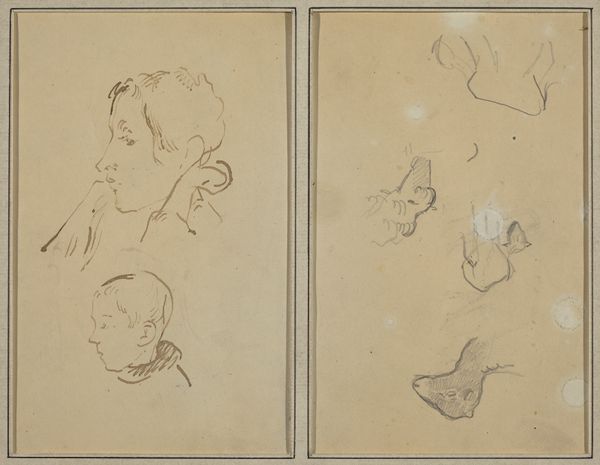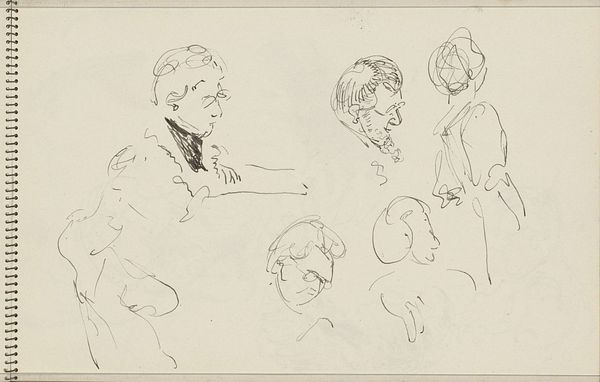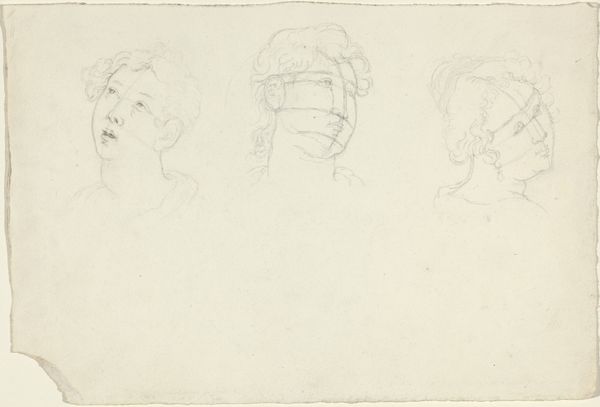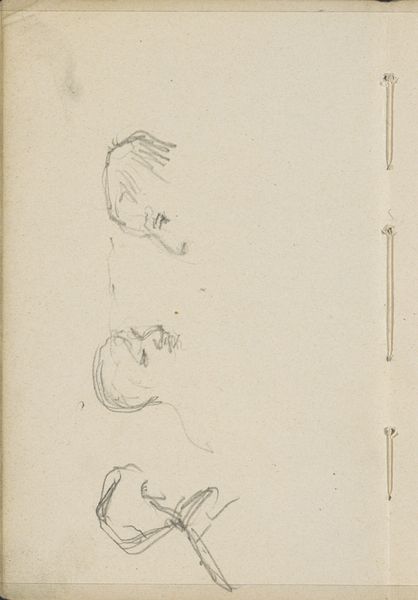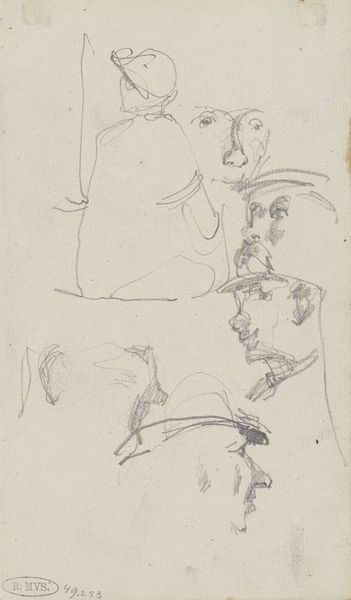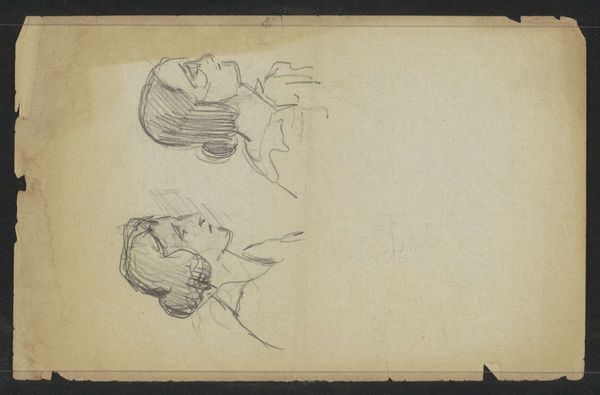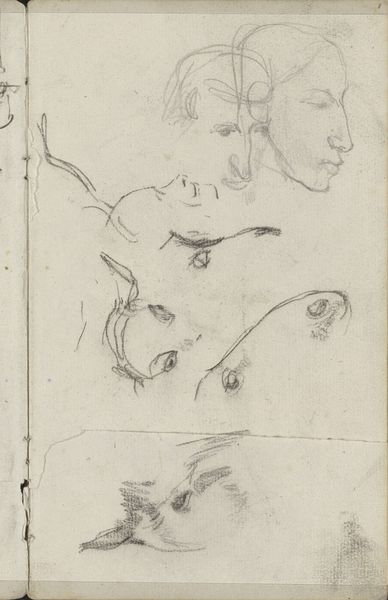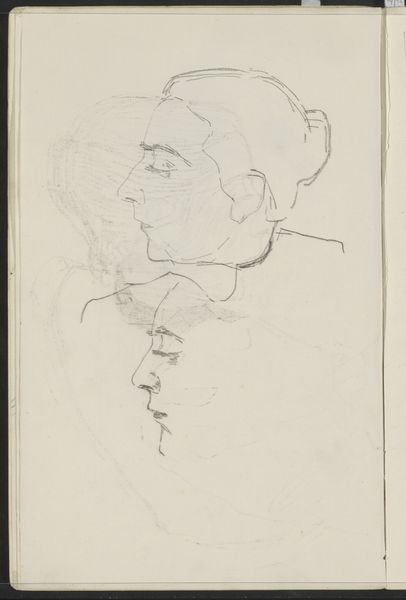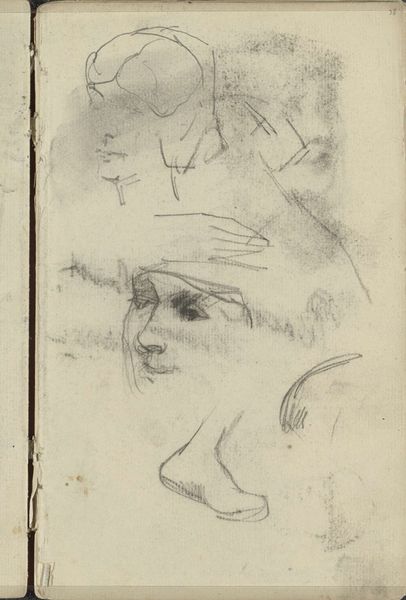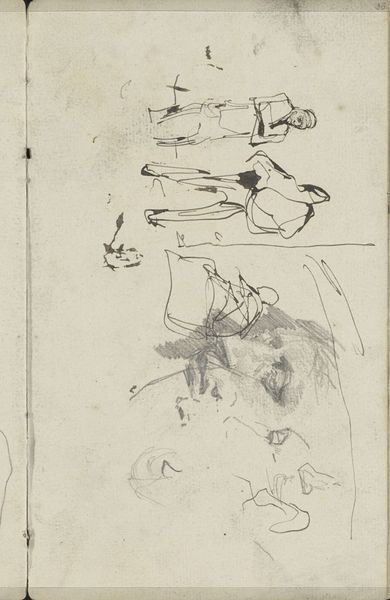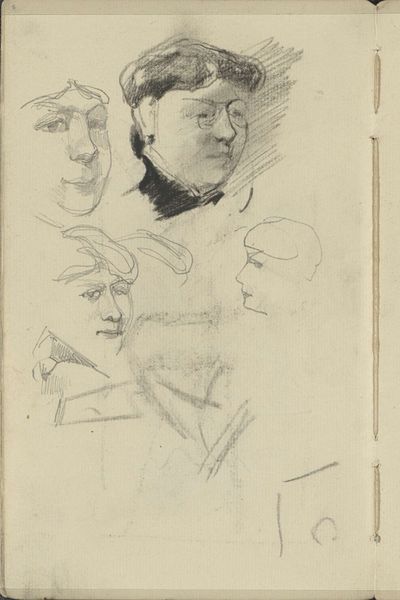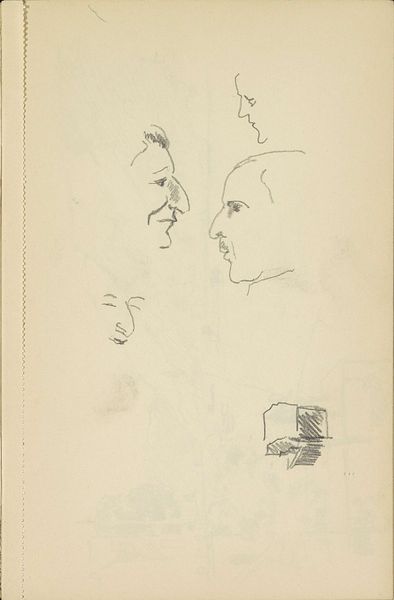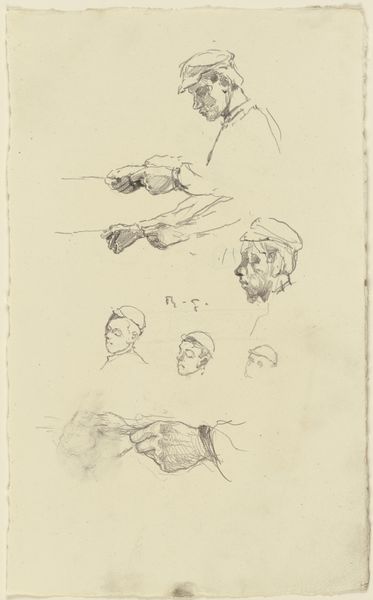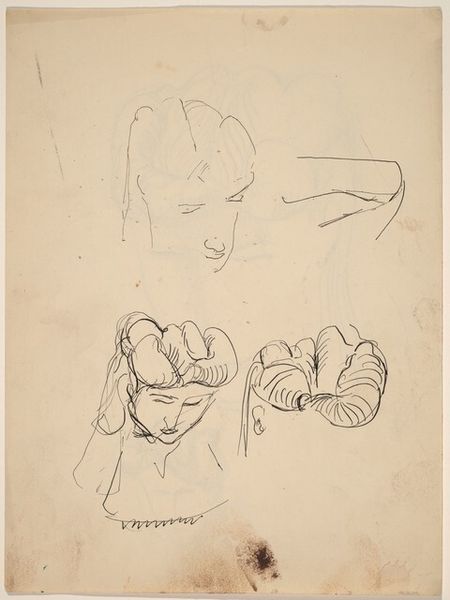
Studienblatt mit Köpfen, oben Johann David Passavant, darunter Julius Hamel
0:00
0:00
drawing, paper, ink, indian-ink
#
portrait
#
drawing
#
imaginative character sketch
#
light pencil work
#
16_19th-century
#
quirky sketch
#
paper
#
personal sketchbook
#
ink
#
german
#
idea generation sketch
#
ink drawing experimentation
#
indian-ink
#
pen-ink sketch
#
sketchbook drawing
#
sketchbook art
#
initial sketch
Copyright: Public Domain
Editor: So, this is "Studienblatt mit Köpfen, oben Johann David Passavant, darunter Julius Hamel," a sheet of studies by Albert Hendschel at the Städel Museum. I'm really struck by the immediacy of these sketches, like we're peeking into the artist's mind as he's observing the world. What catches your eye when you look at it? Curator: What grabs me is precisely that sense of intimacy, like discovering a private journal. These aren't polished portraits, but fleeting impressions, capturing a sense of character more than precise likenesses, don’t you think? Imagine Hendschel in a bustling coffeehouse, rapidly sketching these individuals he observed. Editor: I hadn't thought of it that way, like stolen moments on paper! The top two figures seem more formally posed than the others. Are those the Passavant and Hamel named in the title? Curator: Ah, yes, and it speaks to the practice of artists at the time – even portraits started with such loose sketches. Hendschel seems particularly fascinated by head coverings, isn’t he? We see bonnets, hats, all given equal attention. What does that suggest to you about his process? Editor: It's like he's exploring the variations of how people present themselves. The sketches feel so raw, like capturing the essence of the subjects rather than striving for photorealism. Curator: Exactly! He’s diving into what makes each person unique in their moment, a celebration of individuality within the everyday. Do you think that sense of immediacy translates across time to us, the viewers? Editor: I think it definitely does! I initially saw it as just a practice sheet, but hearing you talk about it, I see now that each sketch is a small story, capturing a time and a place. It reminds me to be more observant myself. Curator: It reminds me too, of the joy of looking, of finding the extraordinary in the ordinary, and that's a pretty great gift from a humble sketchbook page, isn’t it?
Comments
No comments
Be the first to comment and join the conversation on the ultimate creative platform.
